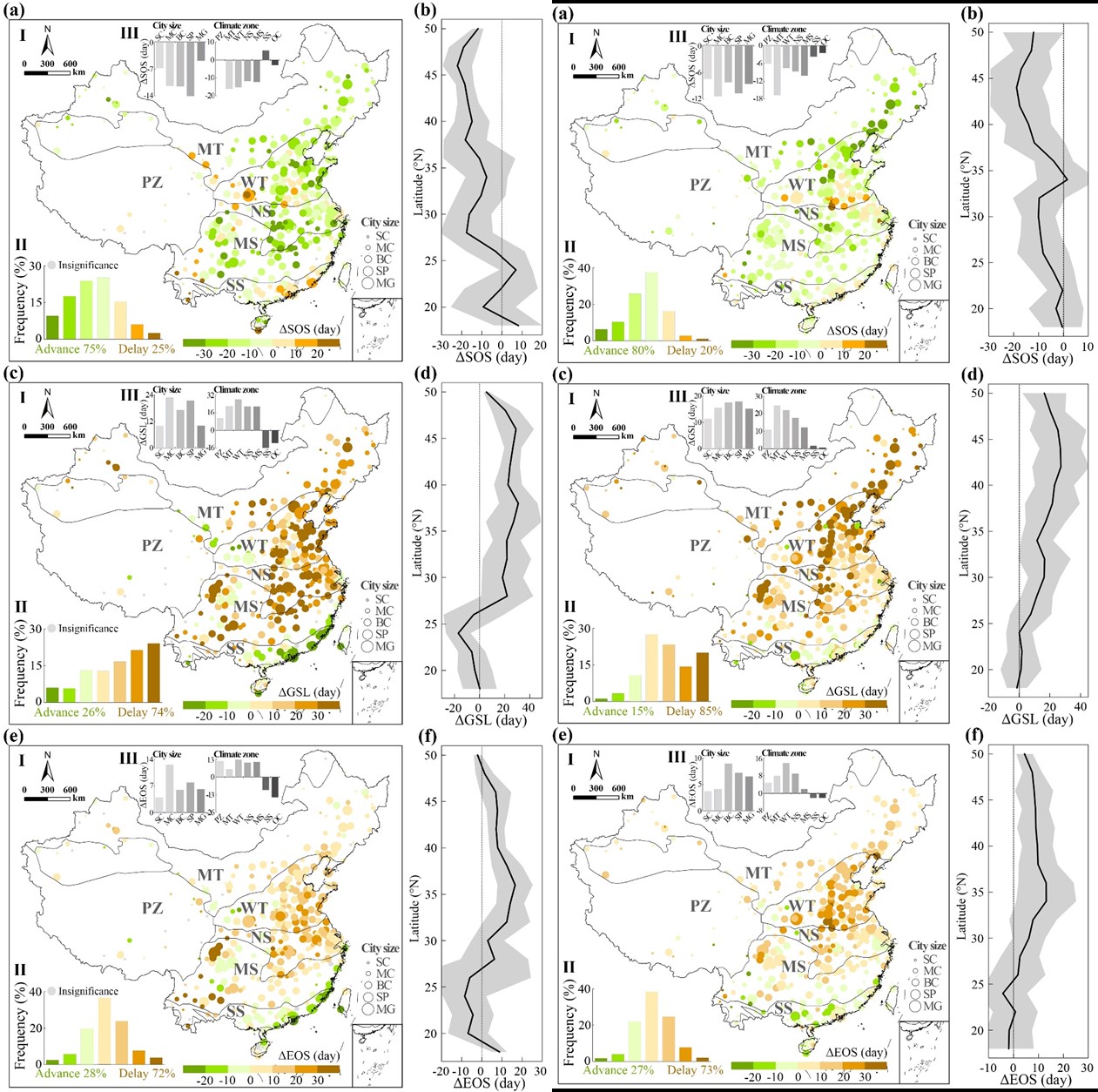Urbanization Alters Vegetation Phenology in Cities
A recent study published in Sustainable Cities and Society has revealed that urbanization has a profound impact on the timing of vegetation growth cycles, known as phenology, across 365 cities in China. Researchers from the Chinese Academy of Sciences' Institute of Applied Ecology analyzed data spanning from 2003 to 2020 to assess changes in the start, end, and length of the growing season within urban areas.
Phenology refers to the study of periodic biological events in the natural world, such as flowering or migration, in relation to climatic conditions. In this context, the study focused on three key indicators: the start of the growing season (SOS), the end of the growing season (EOS), and the growing season length (GSL). The findings indicated that, over the long term, 75% of the cities experienced an advancement in SOS by approximately 16 days, while 74% recorded an extension of GSL by nearly 24 days, and 72% had a delay in EOS by about 12 days.
When comparing urban centers to their adjacent rural areas, 80% of the cities exhibited an earlier SOS by around 13 days, 85% showed a prolonged GSL by 18 days, and 73% experienced a delayed EOS by roughly 11 days. These patterns suggest that urban environments, influenced by factors such as elevated temperatures from the urban heat island effect and increased artificial light, significantly alter the natural rhythms of plant life.
The researchers employed SHapley Additive exPlanations (SHAP) analysis, a method used to interpret complex machine learning models, to identify the primary drivers behind these phenological shifts. The analysis highlighted temperature as the most influential factor, followed by nighttime light intensity and radiation levels. These elements interact in complex, non-linear ways to affect vegetation cycles.
Understanding these changes is crucial, as phenological shifts can have cascading effects on ecosystems, agriculture, and urban planning. The research underscores the importance of considering phenology on urban vegetation carbon sequestration, especially in the context of ongoing climate change.

Figure 1. Spatial and temporal variations in vegetation phenology across Chinese cities (Image by JIA Guangliang).



